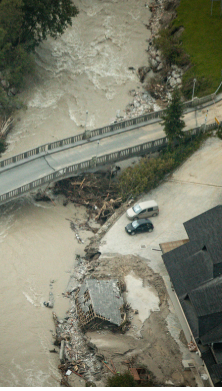- Allianz analysis of 100,000 claims reveals top causes of liability loss for businesses: defective product/ work quality issues, crashes and human error
- Increasing potential for larger, more complex and international claims resulting from global product recalls, corporate liability and environmental incidents
- Digitalization and growth of “sharing economy” present new loss scenarios
- US remains the world’s largest liability market, but US-style litigation is spreading in Europe and Asia with rising consumer awareness and collective redress possibilities in many countries.
Downloads
A defective product is recalled around the world. Human error results in a major shipping incident. Credit card data is stolen in a cyber attack. A dam collapses causing significant damage to the environment: Modern corporate liability exposures can arise from a growing number of sources and have the potential to result in larger and more complex losses for businesses than ever before, warns Allianz Global Corporate & Specialty (AGCS) in a new report Global Claims Review: Liability in Focus. The report identifies defective product or work, crash and human error incidents as the largest causes of liability loss for businesses, based on analysis of insurance claims.
While ‘everyday’ liability claims like slips and falls or workplace incidents have been reducing due to more stringent safety regulations and better risk management, the report says the potential for more expensive liability losses around the world is increasing, particularly in relation to global product recalls, corporate liability, cyber and environmental incidents. Additionally, new corporate liability exposures will arise from disruptive technologies and the more complex business models of the growing ‘sharing economy’.
“Liability losses are ubiquitous and can range from minor incidents to major disasters, always causing third party damage or injury,” says Alexander Mack, AGCS Board Member and Chief Claims Officer. “The risk landscape for companies is constantly shifting with liability risks on the rise globally. New technologies such as the internet of things, autonomous mobility or 3D printing will create fundamentally new liability scenarios for companies in almost every sector.”
The AGCS Global Claims Review analyzes over 100,000 corporate liability insurance claims from more than 100 countries, with a total value of €8.85bn (US$9.3bn), paid by AGCS, and other insurers, between 2011 and 2016. Over 80% of losses arise from ten causes.
Top 10 causes of liability loss by total value of claims
- Defective product/work
- Collision/crash
- Human error
- Accidental nature/damage
- Slips/falls/falling objects
- Water/fire/smoke damage
- Environmental damage
- Natural hazards
- Vandalism/terrorism
- Property damage

Top causes of loss and claims trends
Impact of a defective product or work is the largest cause of loss, accounting for almost a quarter of the value of all claims (23%). The average loss costs businesses in excess of €260,000 with the cost of product recalls being a major driver. “The number of recalls has been steadily rising with increased focus on product and workplace safety, as well as more proactive regulation,” says Larry Crotser, Head of AGCS Chief Claims Office, North America.
Significant improvements in automotive and aviation safety may have reduced the number of collisions and crashes in recent years but these are still a major driver of liability losses, accounting for over a fifth of the value of all claims (22%), as well as generating the most claims. Human error (19%) is the third top cause of loss, driven by incidents which result in major losses, such as aviation and shipping events or employee injury.
Larger losses more commonplace

Technology to drive big shift in liability losses

And finally…unusual liability claims
Press Contacts
About Allianz Global Corporate & Specialty
Allianz Global Corporate & Specialty (AGCS) is a leading global corporate insurance carrier and a key business unit of Allianz Group. AGCS provides risk consultancy, Property-Casualty insurance solutions and alternative risk transfer for a wide spectrum of commercial, corporate and specialty risks across 12 dedicated lines of business.
Our customers are as diverse as business can be, ranging from Fortune Global 500 companies to small businesses, and private individuals. Among them are the world’s largest consumer brands, tech companies and the global aviation and shipping industry, but also wineries, satellite operators or Hollywood film actors. They all look to AGCS for smart answers to their largest and most complex risks in a dynamic, multinational business environment and trust us to deliver an outstanding claims experience.
We constantly strive to deliver the best for our customers through our global team of around 4,400 employees from over 70 nationalities in 34 countries worldwide. As the one of the largest Property-Casualty units of Allianz Group, we are backed by strong and stable financial strength ratings and a global network in over 200 countries and territories. In 2018, AGCS generated a total of €8.2 billion gross premium worldwide.




















